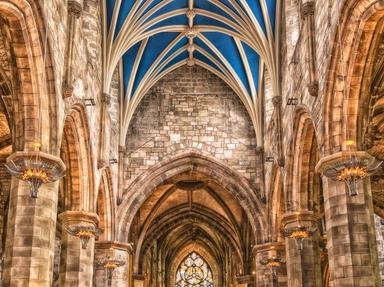Quiz Answer Key and Fun Facts
1. Of which city in the North-West of England is this the cathedral?
2. Of which city in the North-East of England is this the cathedral?
3. Of which city in Yorkshire is this the cathedral?
4. Of which city in the East of England is this the cathedral?
5. Of which city in the North-West of England is this the cathedral?
6. Of which city in the East Midlands is this the Cathedral?
7. Of which city in Yorkshire is this the cathedral?
8. Of which city in the South-East of England is this the cathedral?
9. Of which city in the East Midlands is this the cathedral?
10. London - there are four major cathedrals in London, but which one is this one?
Source: Author
Red_John
This quiz was reviewed by FunTrivia editor
stedman before going online.
Any errors found in FunTrivia content are routinely corrected through our feedback system.

